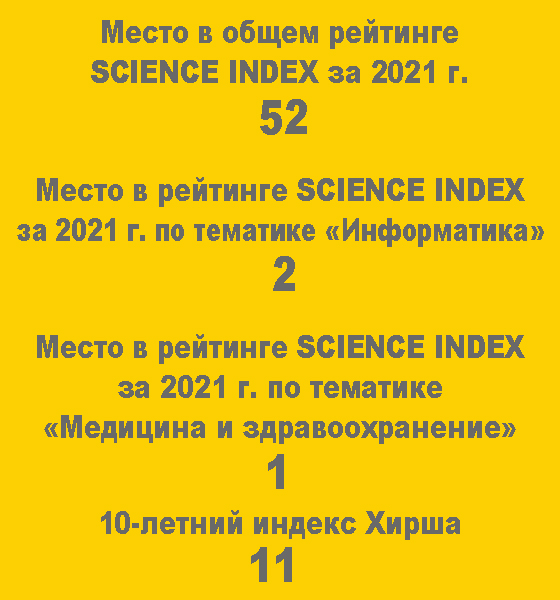Diagnosis in the era of digital medicine DOI: 10.29188/2712-9217-2024-10-1-7-32
- Shaderkin I.A. – PhD, Head of the Electronic Health Laboratory of the Center for Digital Medicine of the Institute of Digital Biodesign and Modeling of Living Systems of the Scientific and Technological Park of Biomedicine of the Federal State Autonomous Educational Institution of Higher Education First Moscow State Medical University named after I.M. Sechenov of the Ministry of Health of Russia (Sechenov University), Leading Researcher of the Department of Scientific Foundations of Healthcare Organization of the FSBI «Central Research Institute for Organization and Informatization of Health Care» Ministry of Health of Russia, Moscow, Russia, RSCI Author ID 695560, https://orcid.org/0000-0001-8669-2674
- Lebedev G.S. – Dr. Sci. (Tech.), Director of the Center for Digital Medicine, Institute of Digital Biodesign and Modeling of Living Systems, Scientific and Technological Park of Biomedicine, First Moscow State Medical University named after I.M. Sechenov, Ministry of Health of Russia (Sechenov University), Chief Researcher of the Department of Scientific Foundations of Healthcare Organization of the Federal State Budgetary Institution «Central Research Institute for Organization and Informatization of Health Care» Ministry of Health of Russia, Moscow, Russia, RISC Author ID 144872
- Fomina I.V. – PhD, Leading Researcher, FSBI «Central Research Institute for Organization and Informatization of Health Care», Ministry of Health of the Russian Federation, Moscow, Russia, RSCI Author ID 1090797
- Fedorov I.A. – senior researcher, FSBI «Central Research Institute for Organization and Informatization of Health Care», Ministry of Health of the Russian Federation, Moscow, Russia, RISC Author ID 1119869
- Lelyakov A.I. – senior researcher at the FSBI «Central Research Institute for Organization and Informatization of Health Care» of the Ministry of Health of the Russian Federation, Moscow, Russia, Author ID 1123275
 1230
1230 Classification of diagnoses in medicine is a systematic approach to categorizing and coding various diseases, symptoms, circumstances of seeking medical care, and causes of death. This process has evolved over many centuries, from the first attempts to describe diseases to the creation of the international classifications used today.
Diagnosis is not a static concept and changes as new knowledge emerges in medicine. This is reflected in the constant evolution of diagnoses and the continuous change in existing classifications of diseases. At this point in time, diagnosis carries not so much a clinical burden when making decisions about patient management, but, for the most part, a statistical function, is included as an important tool in health care financing issues, and is actively used in health care organizations.
The authors believe that the diagnosis does not allow solving the problem of transition from a curative (therapeutic) model of healthcare to a preventive one, where it is necessary to work with a healthy person and risk factors.
In some cases, clinicians remain dissatisfied when using an approach where it is necessary to strictly limit clinical tactics to the framework of existing diagnoses dictated by accepted classifications of diseases. The most striking contradictions associated with diagnosis occur when using digital technologies in medicine.
Difficulties associated with assigning a patient a diagnosis in the ICD tree are associated with the insufficient current level of knowledge about the etiology and pathogenesis of the disease. A symptomatic approach to their treatment plays a major role in overcoming the problem associated with a low level of knowledge about diseases.
| Attachment | Size |
|---|---|
| Download | 1.98 MB |


















































